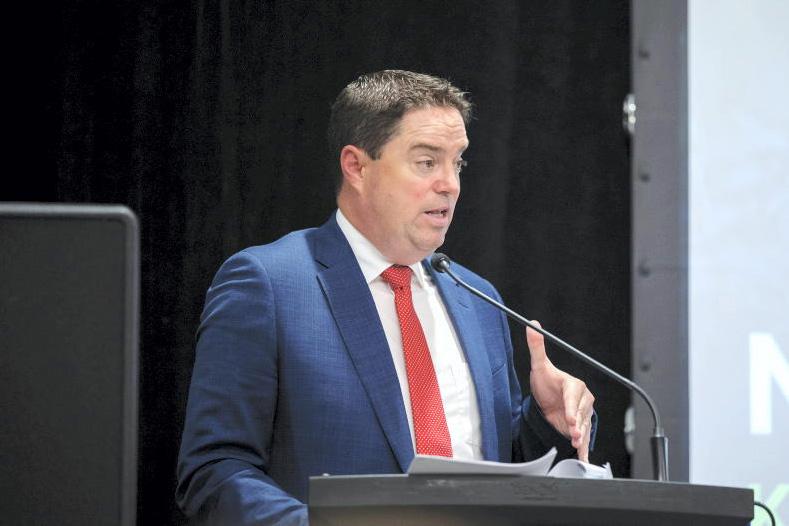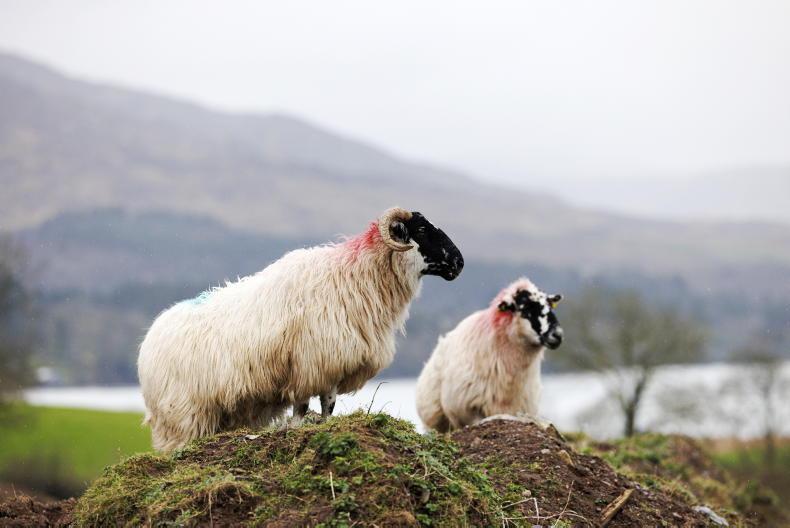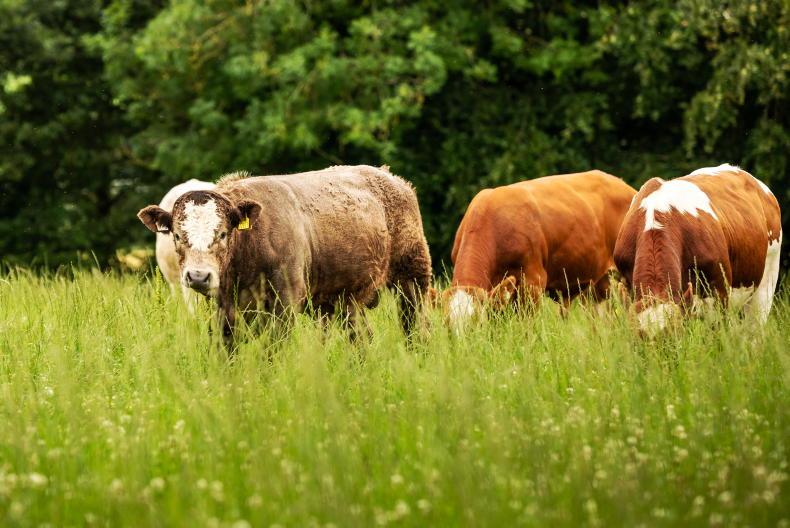Front-loading surged back into the consciousness of CAP watchers last week.
After almost two years of being focused on mandatory convergence levels and eco schemes, a policy implement that was rejected in Ireland in 2014 appeared as part of the final package that was almost accepted by last week's Ministerial Council meeting.
The ministers will meet again at the end of this month to try to agree a final package before the Portuguese presidency ends.
Past experience tells us deals in Europe always happen in the last month of a presidency, so the pressure will mount for compromise and agreement.
Bargaining chip
Perhaps mandatory front-loading will be a bargaining chip, exchanged for acceptance of high convergence and high eco scheme funding.
If that's the case, it will be disappointment again for Fianna Fáil TD Eamon O'Cuiv, who as opposition agriculture spokesperson backed front-loading last time out.
That only adds to the complexity and political landmines
Matt Carthy, the Sinn Féin TD who is the current opposition agriculture spokesperson, sees merit in the concept - will he advocate for it?
Donei Shine of the Farmers Rights Group was a strong advocate and the INHFA has spoken in favour of it, so even if mandatory front-loading is not imposed, there may still be a domestic debate as to whether we should adopt it as an optional policy instrument of CAP.
Flexibility
Quite a lot of flexibility exists in the current proposals as to how exactly front-loading would operate.
That only adds to the complexity and political landmines for the Minister and Department; they will be treading warily.
What we know for certain is that the proposal is to take 10% of the Pillar I payment pot to fund front-loaded payments.
That means every farmer will lose 10% of their current basic payment pot (greening included) to this fund.
That will be on top of the 20% to 25% diverted to the eco schemes. This means that 30% to 35% of every current entitlement would be lost to these two measures, should they be introduced in tandem.
Add in the 3% for young farmers (up from the current 2%) and the relatively modest sums for the protein payment and for producer groups.
That would leave pillar one funds looking like this:
Effectively, there would be €735m for basic payments, which would be subject to convergence at whatever the final figure is.
It’s currently likely to be 85%, meaning the minimum entitlement value would be increased to be 85% of the average entitlement value.
Then the front-loaded payment would be added back into each farmer’s payment in each year from 2023 on.
It would be a top-up payment added to the applicant’s entitlement value on a set number of entitlements.
It can be applied to a minimum of 10ha and a maximum of the national average holding - in Ireland’s case 32ha.
Mechanism
Thus, every basic payment applicant will receive the payment, with the possible exception of one grouping.
There is a facility to exclude very small holdings - hobby farms - from the top-up payment delivered through the front-loaded mechanism.
The Minister could decree that it is paid out on the first 10ha. He could exclude the first 5ha and pay out on hectares five to 15. He could pay on the whole 32ha.
That’s is a lot of flexibility - more than any minister might want.
Current payments are diverse
We have to remember there are two separate criteria that determine each farmers’ basic payment. These can be classified as scale and intensity.
SCALE: This refers to the size of the holding and the number of entitlements held. Most farmers have one entitlement for each hectare of eligible land owned, so the scale of land owned and entitlements owned usually are similar, if not identical.
INTENSITY: This effectively is the value of each entitlement. Why call it intensity? Well, the original entitlements were awarded in 2004 based on the historical direct payments made in the reference years of 2001-02. The more intensive the output from a farm in those years, the higher the payment. Despite convergence, the highest payments then are the highest payments today. The gap has been closed, and will be again.
Exceptions
There are some exceptions to this rule of thumb. Firstly, potato and vegetable crops, pigs and poultry received no direct payments in the 1992-2004 era and farms with these activities had their entitlements diluted as a result.
Some very intensive vegetable growers have modest entitlements.
Suckler farmers have argued since 2004 that they were disadvantaged by a system that granted high entitlements to the people who had bought their animals and claimed nine- and 22-month premiums.
Similarly, dairy cows received no payments, although many dairy farms in the quota era built up significant payments through beef premia and many grew grain as well.
Reference years
Of course, it’s also true that almost 20 years have passed since the reference years, but, in general, the higher payment recipients are still the cohort of more intensive farms.
None of this is an argument in favour of less convergence, but, to understand what is going to happen when the new regime kicks in, it’s necessary to have a clear view of where things are now.
Size matters, but less than you think
There is a perception that smaller farmers will gain from this, and that applicants with larger holdings will lose.
The latter is generally true, but the former is not. Depending on the scenario, there will be farmers on very average size farms that will lose out.
For instance, we’ll start with the example of a farmer with 40ha with very high-value entitlements of €500/ha (including greening).
The farmer will lose 10% from those entitlements to the front-loading fund, which is €50 from each entitlement, a total loss of €2,000.
The top-up payment is then paid on the first 10ha. The rate will be in the region of €100/ha, giving back that farmer €1,000.
This is a net loss of €1,000, separate to any other gain or loss from eco scheme funding or indeed convergence.
He only gets back half of what he put in. And that’s on a decent-sized farm, slightly over the average, but certainly no ranch.
In order to look at a range of possible outcomes, we will take six farmers and examine how they would be affected by two different front-loading options.
Two farmers have 20ha, two have 40ha and two have 80ha. In each pair, one has entitlements worth €400, the other entitlements worth €200.
How can we predict what the payment level will be?
It’s a bit of a guessing game to predict what level a front-loaded payment will be, but it’s not an uneducated guess.
We know there would be around €118m in a fund for front-loading - 10% of the current Pillar I funds.
We know that there are about 123,000 farmers in receipt of the basic payment. If it’s paid out on the first 10ha, the vast majority of farms are more than 10ha, and would receive the maximum payment. So it works out at €96/ha on average.
If the payment were to be made on maximum 35ha, it becomes much more difficult to extrapolate figures.
This is because many farms - over half of all farms - are less than the average and so would only gain a partial payment in such a scenario.
For illustrative purposes only, I’m going to infer that the maximum payment pot per farmer will go up from €960 (€96 x 10ha) in the first scenario, to €1,200.
It is probably going to be less than that, but will give an indication of how farmers with different circumstances might fare out. That means a payment of €37.50/ha on up to a maximum of 32ha.
Remember, these are rough calculations to show how front-loading might play out, no more than that.
What we do see is that, if the 32ha option were taken, the 20ha high-entitlement farmer would lose out. If the 10ha option were chosen, that farmer gains, but only marginally.
The lower-entitlement farmers fare better than their counterparts on the same size holding, but with higher current payments.
That effectively points to the fact that this is a third layer of convergence, along with the eco schemes, and before the actual convergence measure itself would occur.
Divisive
All in all, front loading is likely to prove another divisive proposal. The IFA has come out fully against it and will be pushing the Minister to reject any deal that contains mandatory front loading.
As long as he has allies, that will be politically possible, but the strength of opposition from the likes of the Belgians, Dutch and Austrians has yet to be tested.
It's all to play for, but we're in extra time now, the result will be determined very soon indeed.










SHARING OPTIONS